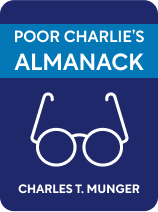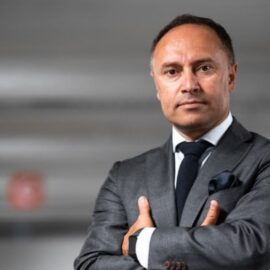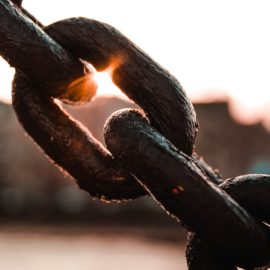

This article is an excerpt from the Shortform book guide to "Poor Charlie's Almanack" by Charles T. Munger. Shortform has the world's best summaries and analyses of books you should be reading.
Like this article? Sign up for a free trial here .
What do you need to build the next trillion-dollar business? What are the factors that can affect businesses in the 21st century?
To build your company into the next trillion-dollar business, you will need exceptional brand recognition, enduring customer loyalty, and scale. You must also recognize the impact of the depreciating dollar, technology, and changing consumer purchasing power on your business goals.
Read on to discover more about what it takes to build the next trillion-dollar business.
Building the Next Trillion Dollar Business
In one speech, Munger poses an interesting challenge—how would you build the next trillion-dollar business from scratch?
This isn’t a hypothetical question. He adds more specifics: It is 1884, and you are given 2 million dollars. How do you grow it to become the next trillion-dollar business? Your company name must be Coca-Cola, and you must create a non-alcoholic beverage business.
He uses this as an example of explaining a company’s success from first principles, which can in turn improve your management and decision making. Here’s Munger’s approach.
Use math to size the problem:
- This beverage must succeed worldwide to get the scale needed to build it into the next trillion dollar business.
- By 2034, there will be 8 billion consumers. Each consumer must drink 64 oz. of water per day. If you capture half the market of beverages, and each person drinks 16 oz. of Coca-Cola a day, we can sell 2.92 trillion eight-ounce servings in 2034.
- Then, if you net 4 cents per serving, you’ll earn $117 billion.
Consider major factors that affect the business over time from 1884 to the 21st century:
- The dollar will depreciate.
- Purchasing power will rise, probably by at least 40x over 150 years.
- Consumers’ desire to improve their drinking experience will rise.
- Technology reduces the cost of creating the product.
- Working backwards, the purchasing power change implies that in 1884, we need just 0.1 cent per serving of earnings.
To build your beverage company into the next trillion-dollar business, commanding a quarter of all beverage consumption, a lollapalooza of multiple supporting factors is required. These include:
- Conditioned reflexes: Seeing the Coca-Cola brand must trigger a response of consumers to purchase. This can be done by psychological conditioning:
- The drink’s sweetness provides value in calories and appeals to our evolutionary desires for food.
- The drink provides stimulation through both sugar and caffeine.
- A cool drink provides welcome relief to cool someone down, especially in hot temperatures.
- Advertising associates the brand with positive things like happiness and family.
- Carbonate the water to elevate it, like champagne.
- Social proof: The more universal consumption is, the more acceptable it is, and the better the effects of consumption.
- Advantages of scale
- Mass advertising improves the economics by driving more demand for the product.
- Larger distribution networks increase availability and makes overhead more efficient.
- Ubiquitous availability in every restaurant and store makes it harder for competition. If a competing product is never tried, it has no chance at creating a competing habit.
Setting Up the Business
Start with no brainer decisions and facts:
- You must trademark Coca-Cola, since you’ll never make enough selling generic beverages.
Set up logistics and distribution to get your product to customers:
- Provide a syrup to fountains and restaurants, who supply their own carbonated water
- Provide completed carbonated beverages in containers. This means you’ll need bottling plants worldwide.
Invert, always invert. What don’t you want on the path to building a massive company?
- Avoid an aftertaste that gets people to stop drinking, so that people feel comfortable drinking liters of your beverage.
- Don’t lose your trademark value. Customer trust can be lost in an instant. Be fanatic about product quality, presentation, and reasonableness of prices.
- At scale, avoid making huge and sudden changes in flavor. This would eradicate the Pavlovian conditioning and cause a loss reaction, which would allow competitors to swoop in and replicate the flavor. (Coca-Cola ignored this idea when launching its failed New Coke overhaul in 1985).
There are many more aspects of Coca-Cola’s success, but this should suffice for a demonstration. The point to this exercise is that most people, even having observed Coca-Cola for most of their lives, cannot explain the success of Coca-Cola. Furthermore, recent executives could not understand the fundamentals well enough to predict the failure of “New Coke.”
To illustrate the utility of this thinking, Munger points to another failure of General Motors. Based on consumer surveys and its well-refined design processes, it decided to eliminate the fourth door in a truck that would seat five people. This ignored basic tenets of what people liked in cars—ease of use and traditional formats.
In general, in times of duress and need to change, don’t suddenly forget the fundamentals of the situation. Your new strategy may destroy what got you to your successful position in the first place.

———End of Preview———
Like what you just read? Read the rest of the world's best book summary and analysis of Charles T. Munger's "Poor Charlie's Almanack" at Shortform .
Here's what you'll find in our full Poor Charlie's Almanack summary :
- A collection of Charlie Munger’s best advice given over 30 years
- Why you need to know what you’re good at and what you’re bad at to make decisions
- Descriptions of the 25 psychological biases that distort how you see the world






